After our recent trip to Cuba, Janet Ruth and Bruce Neville made an interesting observation: we probably saw a lot of male Bee Hummingbirds (Mellisuga helenae) in nonbreeding plumage. Like males of most other hummingbird species, Bee Hummingbird males in breeding plumage (“Definitive Basic Plumage”) are easy to identify – they have fiery metallic/iridescent pinkish-red feathers on the gorget and head that are lacking in females and juveniles of both sexes. Distinguishing the age and sex of non-breeding-plumage males gets more complicated…
I initially assumed that the hummingbird shown below was a female Bee Hummingbird; there is a gray-white breast and no fiery red gorget or head feathers (i.e., “helmet”). Given the location (Cuba), it is unquestionably a Bee Hummingbird. But is it a female?
In Field Guide to the Birds of Cuba, Garrido and Kirkconnel describe the Bee Hummingbird as follows:
Male: iridescent deep blue to green above, gray below. Head, chin and throat fiery iridescent pink or red. Tail iridescent blue, very short and rounded. Non-breeding males lack a gorget and so resemble females but have black-tipped tail. Female: larger, with bluish green back and gray underparts. Tips of outer tail feathers white.
The Spanish-language version of the same book contains descriptions of the (identical) plates that the English version lacks, and the Spanish text purportedly has fewer errors than the English-language version (Orlando H. Garrido, 2012, personal communication). On the description page for Plate 30 (Lámina 30), the Spanish version of the book describes the juvenile Bee Hummingbird as:
“Similar a la hembra. La plumas externas de la cola con bordes en blanco” or
“Similar to the female. The outer tail feathers with white edges.”
Careful examination of the admittedly small plates appears to show white tips on the retrices of the “immature” (labeled male, English version) and “Juvenil” (sex not identified, Spanish version) Bee Hummingbird. Therefore, from these descriptions it appears that both females (adult and immature) and immature males have white-tipped outer retrices.
There is very little original research specific to the Bee Hummingbird plumage and molt patterns that I am aware of; therefore, closely related hummingbird research might be helpful for further clarification. Other members of Mellisugini (the “Bees” clade – see McGuire et al) are the most appropriate comparators. The ‘‘Bees’’ include the following monophyletic assemblage of genera: Archilochus, Calliphlox, Calypte, Chaetocercus, Myrtis, Rhodopis, Selasphorus, and Stellula. Although Mellisuga was not included in these recent phylogenetic studies, not surprisingly, the Bee Hummingbird would likely be nested within this monophyletic assemblage based on size, plumage patterns, soft-part coloration, etc.
Anna’s (Calypte anna) is perhaps the best studied of the Bees. The Birds of North America description of Anna’s “Appearance” describes the molt strategy of Anna’s Hummingbird as Complex Basic Strategy; the most relevant portion is extracted here:
Formative Plumage
“First Basic” or “Basic I” plumage according to Humphrey and Parkes (1959) and later authors; see revision by Howell et al. (2003). Present primarily Aug-Jul. Indistinguishable from Definitive Prebasic Plumages, sex for sex, in most birds following complete Preformative Molts. Some males in Formative Plumage can be identified by having one or more retained juvenal rectrices with white tips, incomplete throat and (especially) crown gorget feathering, and/or reminents of white in the tips of the formative rectrices (Pyle 1997, Pyle et al. 1997). Females may also retain rectrices but similarity in color patterns make it difficult to confirm if retained feathers juvenal or not.
So with Anna’s, it seems clear that the lack of white-tipped retrices is only found in males, and juvenile males may retain white-tipped retrices.
What about other “Bee” species? There is some nice comparative data on the plumage of Selasphorus species (Stiles 1983). With even a cursory examination of the figures in the paper, it is immediately clear that “white tips on retrices” is a predominant trait of females and immatures, and the presence of any white on the retrices of adult males varies by species. All-black retrices on females do not occur.
So what about the “female” Bee Hummingbird that I presented earlier, or other hummers that I (and other photographers) photographed on this trip? Careful examination of contemporaneous images shows new iridescent red feathers starting to appear on the head, as well as a probable gorget. Furthermore, all of the images of these birds show black retrices, and none of the retrices have white tips. In other words, none of these birds are females. They are likely adult males in non-breeding plumage juvenile males in Preformative (First Prebasic) molt. Janet and Bruce, you nailed it! (And thanks to Sheri L. Williamson for her comments below.)
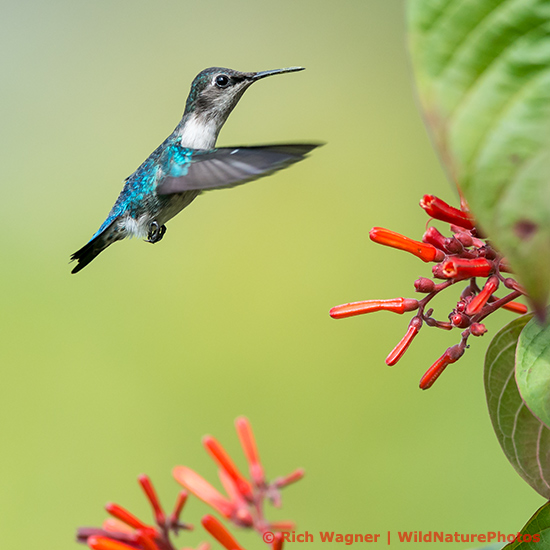
Bee Hummingbird (Mellisuga helenae), juvenile male in flight near the red flowers of Firebush (Hamelia patens). Cuba
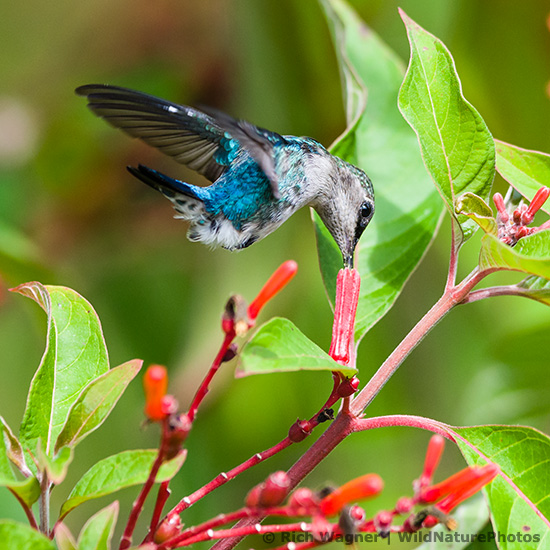
Bee Hummingbird (Mellisuga helenae), juvenile male, in flight near the red flowers of Firebush (Hamelia patens). Cuba
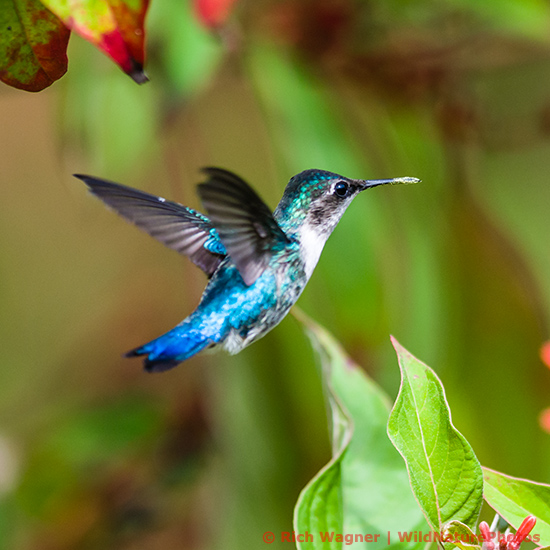
Bee Hummingbird (Mellisuga helenae), juvenile male, in flight near the red flowers of Firebush (Hamelia patens). Cuba
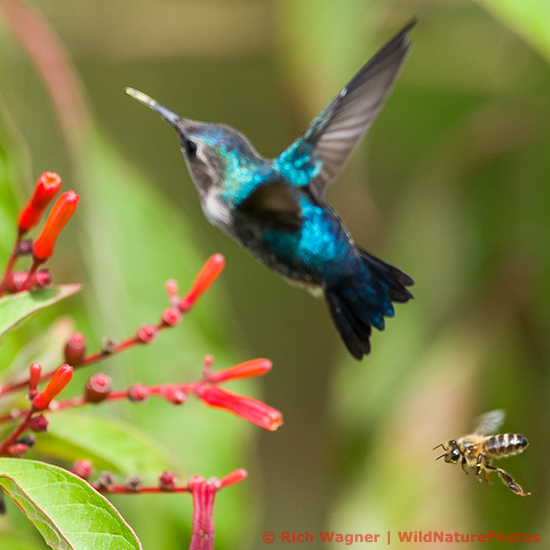
Bee Hummingbird (Mellisuga helenae), juvenile male, in flight behind a honeybee near the red flowers of Firebush (Hamelia patens). Cuba
Tags: Cuba
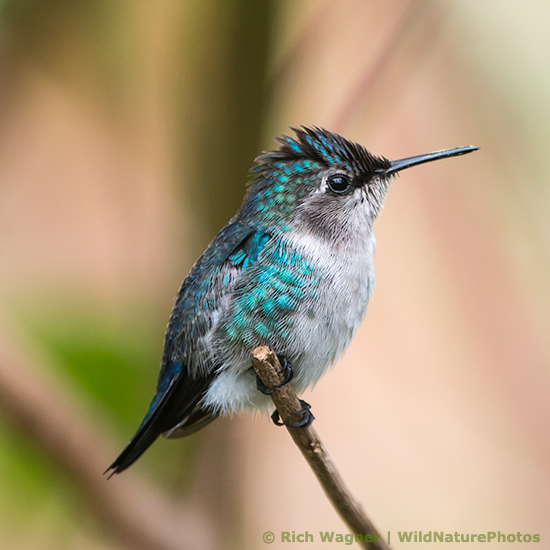
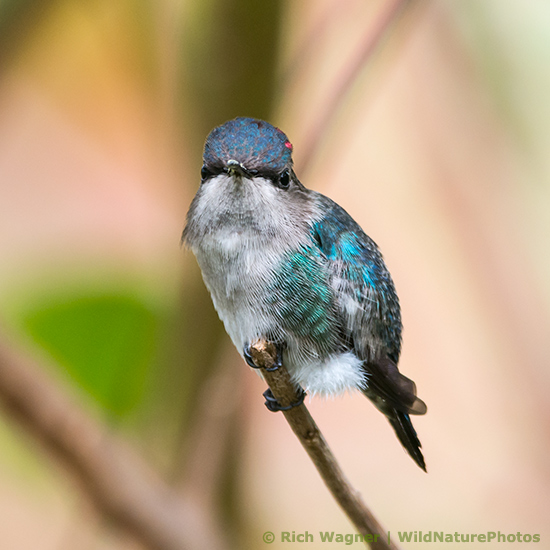
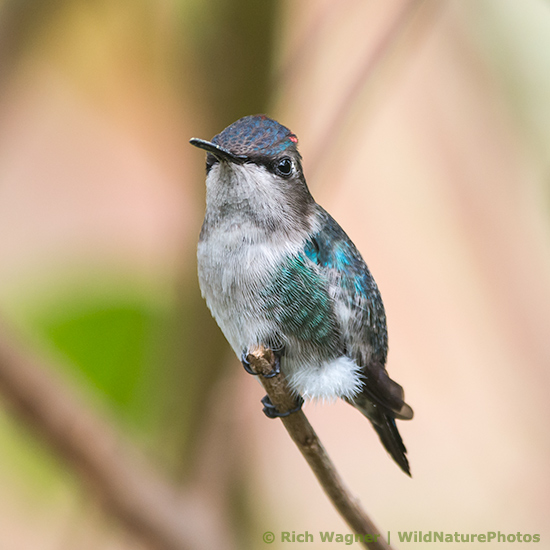
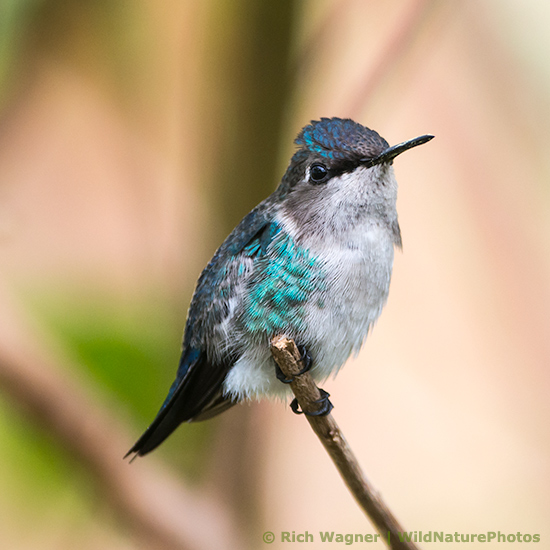
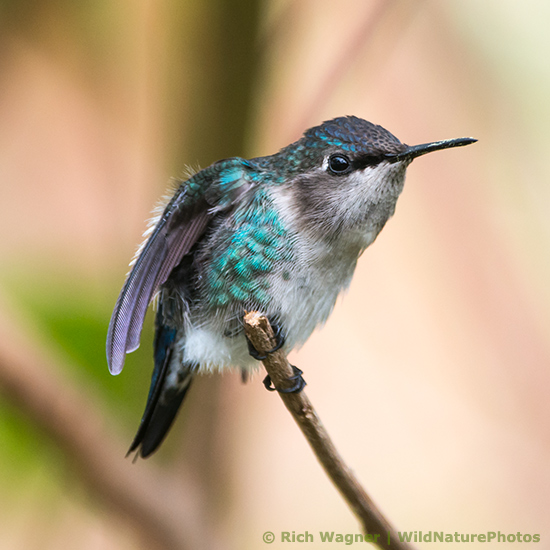
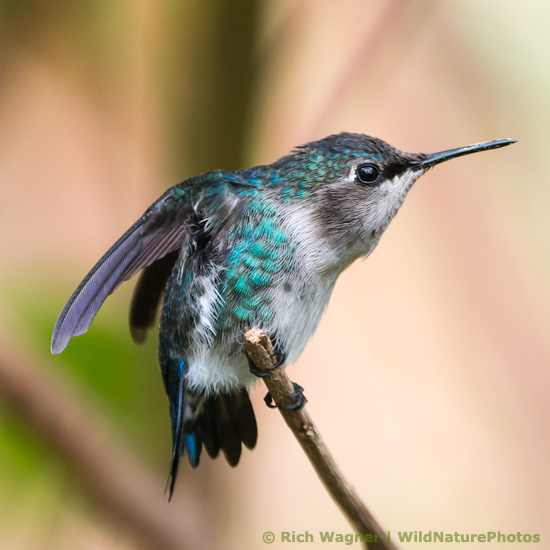

Hi, Rich. Great shots indeed! I’m a bit confused by the age and molt issues, though.
If adult male Bee Hummingbirds assume a female-like non-breeding plumage for part of every year, they would be unique at least among the bee clade if not among all hummingbirds, so I have to wonder whether the field guide’s reference to “non-breeding males” was a faulty translation.
Since the pattern of feather replacement in your photos is well within the range of variation in Preformative (First Prebasic) molt documented in juvenile males of all of the northern members of the clade (including Anna’s), that’s how I would interpret what you were seeing. To my eyes, the extensively iridescent underparts and “five-o’clock shadow” identify this bird as a juvenile male even in the absence of adult rectrices and red gorget and/or crown feathers.
Thanks, Sheri, it’s nice to have the opinion of an expert! The nomenclature of bird molting and plumage is enough to make one’s head spin, and I think it leads to a lot of confusion for the majority of us who have not studied molting in depth. Even today I was re-reading Howell’s paper from 2003, trying to make sure I have the basics straight. I think I do, but it’s still fragile in my mind, especially when old terminology or out-of-date language gets thrown in. And yes, I think “non-breeding (plumage) male” is a phrase that should be avoided with hummingbirds, for many reasons. This post was a way of thinking out loud as I attempted to understand molts in Bee hummingbirds.
My conclusion in the above post (“They are likely adult males in non-breeding plumage.”) was poorly written: I seem to imply that a male in Definitive Basic plumage can molt into a “non-breeding plumage,” which clearly doesn’t happen. (By the way, Cornell has a nice online series of photos of the molt of a Calliope gorget: http://www.birds.cornell.edu/A.....index_html.) The hummers we saw had molted their juvenile retrices. They are males (juveniles) in Preformative (First Prebasic) molt. Thanks for the comments, and if there is anything else about the molt/plumage of these birds that I’ve written that needs clarification, please enlighten us!
And one last thought… When does a juvenile bird become an adult? Is this second-year, nesting, immature-plumage Cooper’s Hawk a breeding juvenile, or an adult with juvenile plumage? Is it a juvenal [sic]? Arggghhh, where’s my camera! 😉
I have a saying about situations like this: The human mind is digital, and nature is analog. You’re the same organism at 11:59 p.m. the night before your 18th birthday as you are at midnight, even though your legal status changes dramatically, and a bird will be the same organism before and after molting the last of its juvenile feathers, even though to our eyes it may become virtually indistinguishable from older members of its species. I suspect that discomfort with this ambiguity is driving the obsession with molt that some ornithologists and birders have developed.
Since our aging criteria for birds are based on physical characteristics rather than behavior or physiology, this bird would be an unambiguous juvenile (second-year by banding terminology).
Thanks for the words of wisdom. 😉
–Rich
Thanks for the clarification. I also get dizzy trying to wrap my head around the increasingly elaborate and arcane molt terminology, and I’m a bit concerned that some of the molt wonks are claiming to have discovered new molts/plumages where none exist (the “alternate plumage” of Ruby-throated Hummingbirds, for example). In this case, it appears that a poor translation is largely to blame for muddying the waters.
I agree – the poor translation is what initially threw me off. Thanks for the reference to your blog post – a fascinating story!
–Rich
Fabulous action shots!